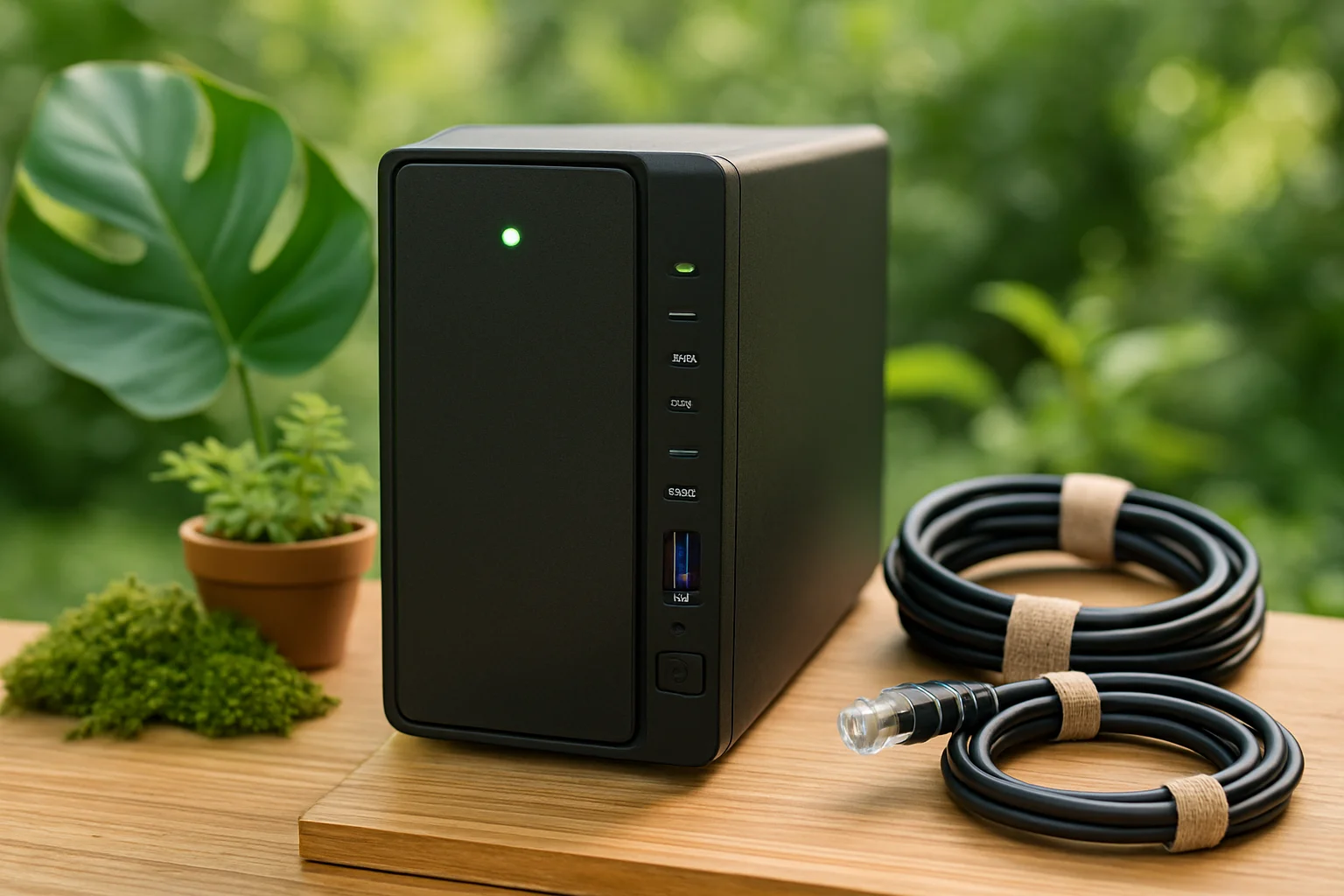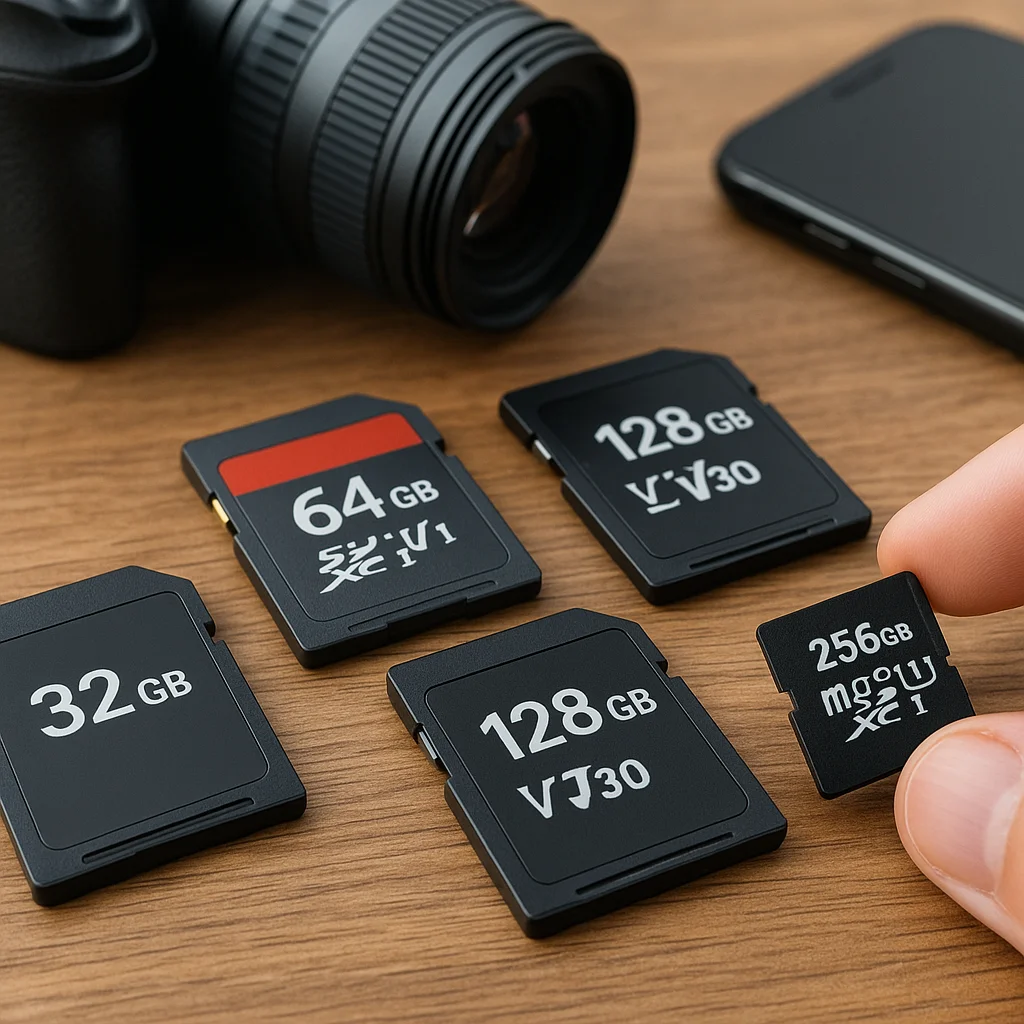Introduction to SSDs
A Solid-State Drive (SSD) is a type of data storage device that uses flash memory to store and retrieve data electronically, rather than relying on moving mechanical parts like traditional hard disk drives (HDDs). This distinction makes SSDs significantly faster, quieter, and more resistant to physical shock.
The term “solid-state” refers to the fact that the drive contains no moving components. Instead, data is stored on interconnected flash memory chips, typically using NAND-based flash memory, a non-volatile type of memory that retains data even when the device is powered off.
SSDs were originally used in high-performance computing environments, such as data centers and military applications, due to their speed and durability. Over time, advances in manufacturing and decreasing costs have made SSDs more accessible to the consumer market, and they are now commonly found in laptops, desktops, gaming consoles, and external drives.
Because of their architecture, SSDs offer near-instant data access, allowing operating systems and applications to load much faster than with older storage technologies. This has led to a significant shift in the expectations for everyday computer performance. Where once long boot times and laggy software were the norm, SSDs have helped redefine user experience standards in modern computing.
Beyond performance, SSDs are also prized for their energy efficiency and compact size. Without the need for spinning disks or moving read/write heads, they consume less power and generate less heat—an important consideration for portable devices and energy-conscious users.
Although SSDs serve the same primary function as other storage devices—storing your operating system, applications, and personal files—their internal workings and advantages set them apart. Understanding the fundamentals of how they operate and what makes them unique is essential before diving into the different types, performance metrics, and use cases covered in the next sections of this guide.
How SSDs Work
At the core of an SSD’s operation is its use of NAND flash memory, a type of non-volatile memory that retains data even without power. Data in an SSD is stored in memory cells grouped into pages, which are further organized into blocks. Unlike traditional hard drives that read and write data magnetically using spinning platters and mechanical arms, SSDs access data electronically through semiconductors, resulting in dramatically faster performance.
When you save a file to an SSD, the data is written to empty pages within a block. However, SSDs cannot overwrite existing data directly in the same location. Instead, to update data, the drive must write the new version to a different block and mark the old data as invalid. This is managed internally by a process called garbage collection, which consolidates and erases blocks with invalid data to free up space.
To prevent excessive wear from repeated writes, SSDs use a technique known as wear leveling. This process distributes write and erase cycles evenly across all memory cells, helping to extend the overall lifespan of the drive. Without wear leveling, certain cells would wear out much faster than others, leading to premature drive failure.
Another key component of SSD functionality is the controller—a microprocessor embedded in the drive that acts as the brain of the SSD. It manages data access, error correction, read/write operations, and the aforementioned wear leveling and garbage collection. The controller also plays a role in performance optimization and encryption, depending on the drive's features.
Many SSDs also include a small amount of high-speed memory known as DRAM cache. This temporary buffer stores metadata and frequently accessed data, accelerating read and write operations. Some budget models may use part of the NAND flash itself as cache (a technique called HMB or Host Memory Buffer in DRAM-less drives), but this usually results in slower performance compared to DRAM-equipped models.
The way SSDs handle data operations contributes to their low latency and high throughput. Since there are no moving parts, access times are measured in microseconds rather than milliseconds, and data can be read or written in parallel across multiple channels—especially in high-performance drives using interfaces like NVMe.
Error correction is another essential feature in SSDs. Most drives implement ECC (Error Correction Code) to detect and fix errors that can occur during data storage or transmission. This ensures data integrity and reliability over time, especially as the number of write/erase cycles increases.
Types of SSDs
SSDs come in a variety of form factors and interface types, each designed for specific use cases, performance levels, and hardware compatibility. Understanding these differences is crucial when choosing the right SSD for your system.
SATA SSD
SATA (Serial ATA) SSDs are among the most widely used due to their compatibility with older and newer systems alike. They use the same interface as traditional HDDs, which limits their speed to the SATA III maximum of around 550 MB/s. Despite being the slowest SSD type available today, SATA SSDs still offer a huge performance boost over mechanical drives and are often used for budget-friendly upgrades.
NVMe SSD
NVMe (Non-Volatile Memory Express) SSDs connect directly to the motherboard through the PCIe (Peripheral Component Interconnect Express) bus, bypassing the limitations of SATA. This results in significantly higher read/write speeds, often exceeding 3,000 MB/s or more on modern PCIe Gen 3 or Gen 4 interfaces. NVMe drives are ideal for tasks that demand high-speed data access, such as gaming, video editing, or running virtual machines.
M.2 Form Factor
M.2 is a compact form factor used for both SATA and NVMe SSDs. It's a gumstick-sized module that plugs directly into the motherboard’s M.2 slot. M.2 drives can use either the SATA interface or the much faster PCIe/NVMe interface, so it's important to verify which type your motherboard supports. The size and connector make M.2 SSDs popular in modern laptops and desktops where space is limited.
PCIe Add-in Card SSD
Some high-performance SSDs are available as PCIe add-in cards, which slot directly into a PCIe x4 or x16 slot on the motherboard. These are typically used in workstations or enthusiast desktops, offering even faster performance by leveraging more PCIe lanes and often including dedicated heatsinks for thermal control.
U.2 and U.3 SSDs
U.2 and U.3 SSDs are enterprise-grade storage devices designed for servers and data centers. They use the PCIe interface but in a 2.5" enclosure that supports hot-swapping and higher endurance. These drives are less common in consumer systems but essential in high-availability environments.
External SSDs
External SSDs connect via USB or Thunderbolt and are ideal for portable storage, backups, and transferring large files. Many are based on SATA SSDs internally, but high-end models now incorporate NVMe drives using USB 3.2 Gen 2 or Thunderbolt 3/4 interfaces for much faster data transfer. These are useful for photographers, videographers, and users who need performance on the go.
Form Factor and Interface Are Not the Same
It's important to distinguish between form factor (the physical shape and size of the SSD) and interface (how the SSD communicates with the system). For example, an M.2 drive can use either SATA or NVMe, and a 2.5" drive can be SATA or (rarely) U.2.
Summary Table: SSD Types
| Type | Form Factor | Interface | Typical Speed | Use Case |
|---|---|---|---|---|
| SATA SSD | 2.5" | SATA III | Up to 550 MB/s | Basic upgrades, general use |
| NVMe SSD | M.2 / PCIe card | PCIe (Gen 3/4/5) | 3,000–14,000 MB/s | Gaming, creative work, high I/O tasks |
| M.2 SATA SSD | M.2 | SATA III | Up to 550 MB/s | Laptops, small desktops |
| PCIe Add-in Card | Expansion card | PCIe | Up to 14,000 MB/s | Workstations, enthusiasts |
| U.2 / U.3 SSD | 2.5" | PCIe / NVMe | Varies (Enterprise-level) | Servers, data centers |
| External SSD | Portable | USB / Thunderbolt | 500–2,800+ MB/s | Portable storage, backups |
Conclusion
Solid-State Drives (SSDs) have transformed the way computers store and access data, offering a significant upgrade over traditional hard disk drives (HDDs). Throughout this guide, we've explored the fundamentals of SSD technology, from their internal structure to the various types available on the market.
We’ve seen that SSDs rely on non-volatile NAND flash memory to store data, allowing for faster read and write speeds, greater durability, and lower energy consumption. With no moving parts, they reduce the risk of mechanical failure and improve overall system responsiveness.
Understanding how SSDs work—through components like the controller, wear leveling, and garbage collection—is essential for appreciating their performance and reliability. These background processes ensure that SSDs can maintain high-speed operations while preserving data integrity over time.
We also explored the different types of SSDs, categorized by their form factors (such as 2.5", M.2, PCIe cards) and interfaces (like SATA, NVMe, and PCIe). Each type is suited for different hardware configurations and performance needs, ranging from affordable SATA SSDs for basic upgrades to high-performance NVMe SSDs for demanding workflows.
When choosing an SSD, it's important to consider not only speed but also compatibility with your device, intended use case, and budget. Whether you're looking to speed up a sluggish laptop, build a fast gaming PC, or equip a workstation for heavy data tasks, there's an SSD type that fits your needs.
By understanding the key differences between SSD types and how they function internally, users can make informed decisions and take full advantage of the speed, efficiency, and reliability that modern solid-state storage offers.






